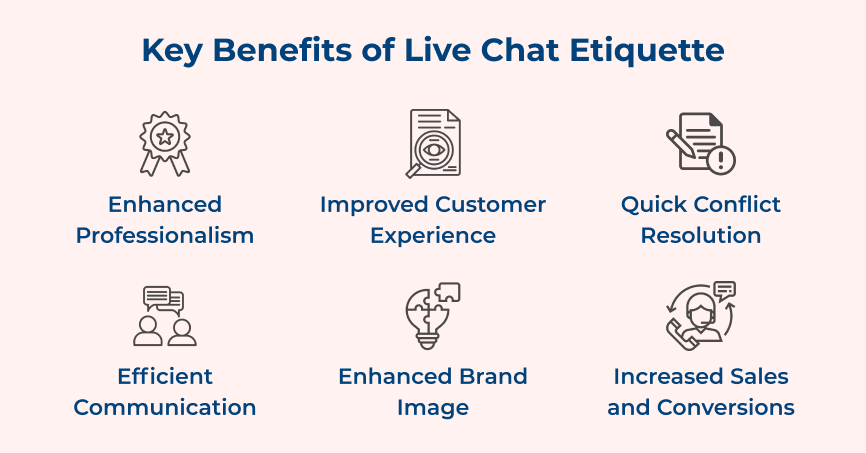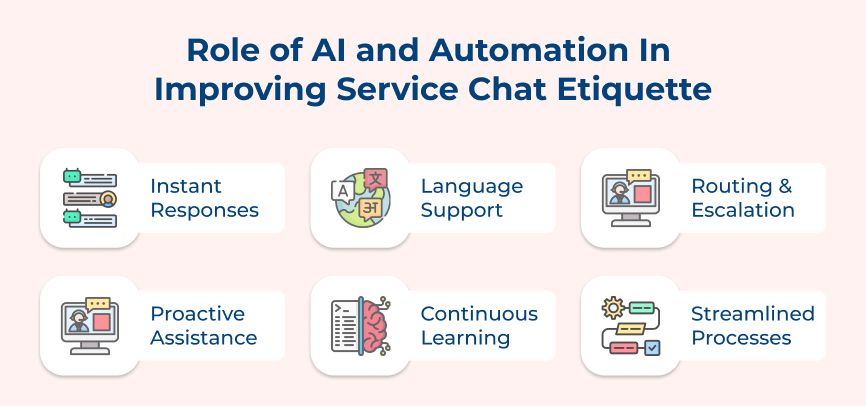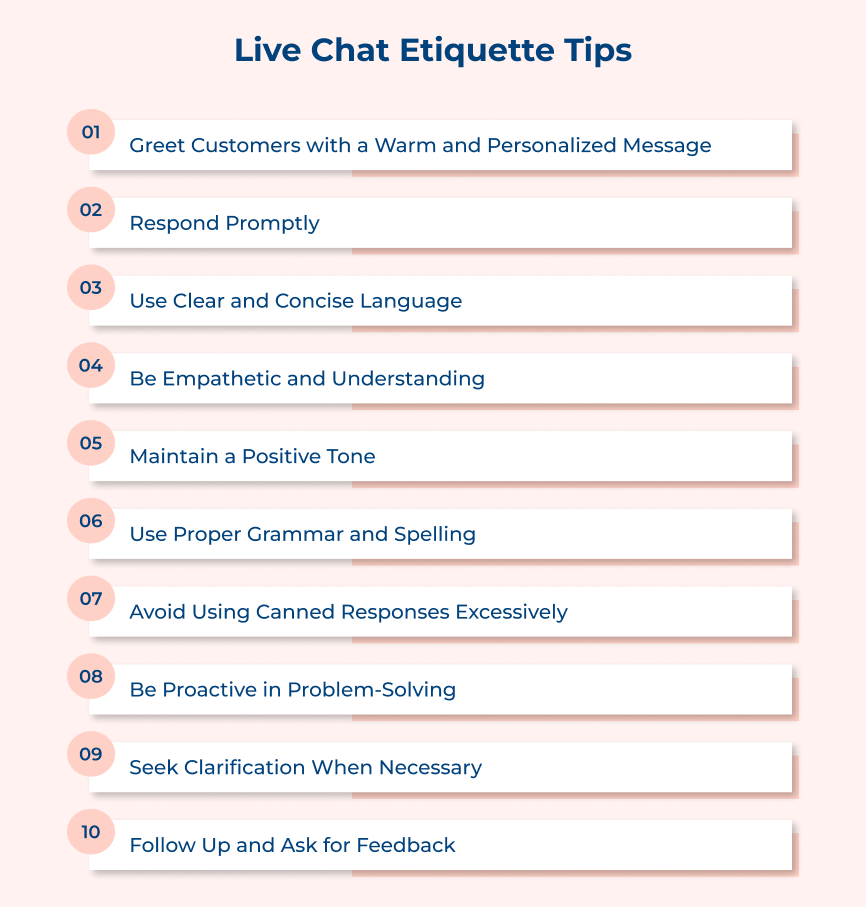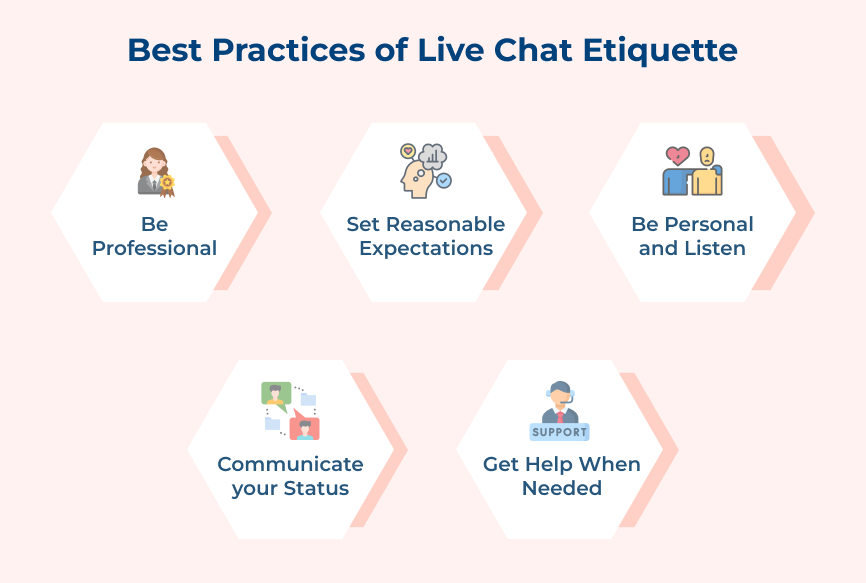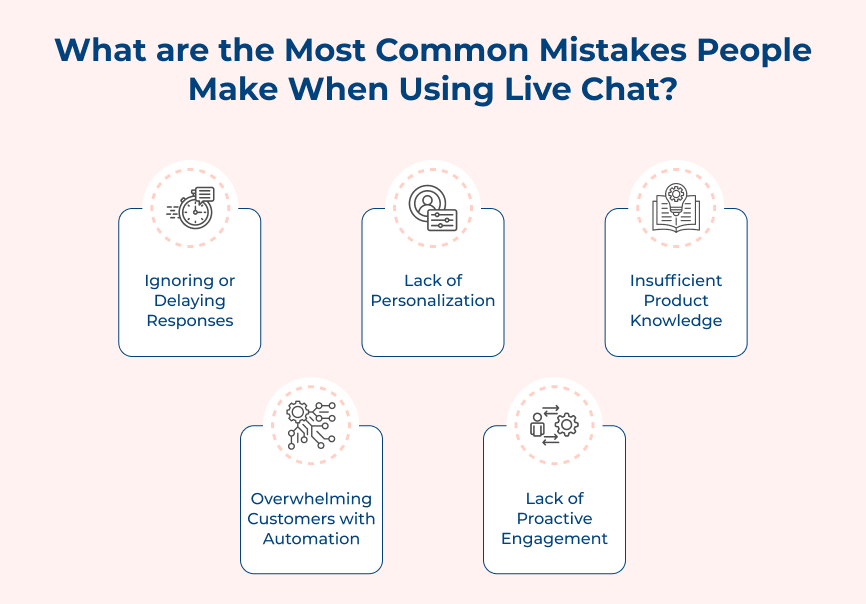1. Greet Customers with a Warm and Personalized Message
Greeting customers creates an immediate connection and makes the customer feel valued. 80% of consumers are most likely to purchase from a brand if they have a personalized approach. A personalized greeting shows the business cares about their needs and is dedicated to providing them with the best possible service. It sets a positive tone and helps establish trust, which is vital for establishing a loyal base of customers.
Imagine a customer initiates a live chat conversation with a question about a product. Instead of receiving a generic greeting like “Hello, how can I help you?” which lacks personalization, they are welcomed with a warm and personalized message such as “Hi [customer’s name]! Thank you for reaching out. How may I assist you with your specific needs today?” The simple adjustment instantly makes the customer feel acknowledged and valued, leading to a more positive interaction.
How to implement it?
- Use the customer’s name: Begin the chat with a personalized greeting that includes their name. The small gesture increases the sense of personal connection.
- Tailor the message to their query: Incorporate the customer’s query or concern into your greeting. It demonstrates that you are paying attention to their needs from the very beginning and are fully committed to resolving their issue.
- Show genuine warmth and friendliness: Make sure to infuse greetings with warmth and friendliness to create a welcoming atmosphere. Use phrases like “Hello! How can I brighten your day?” or “Hi there! I’m here to make your experience exceptional!”
2. Respond Promptly
When it comes to providing exceptional customer service, one of the most crucial live chat rules to follow is responding promptly. Customers expect quick and efficient communication in the market of today. Failing to respond promptly can lead to frustration and even lost business. Companies need to prioritize timely responses.
Let’s take an example of a customer contacting a company through live chat for a pressing issue. If the response is delayed or takes too long, the customer’s frustration will increase, potentially leading to a negative perception of the company’s customer service. On the other hand, a prompt response can assure the customer that their concerns are being addressed promptly, leading to improved satisfaction and loyalty.
How to implement it?
- Set response time goals: Establish specific response time goals for the customer support team to meet. Train them to prioritize timely responses and provide the necessary resources to achieve these goals.
- Use canned responses: Use pre-written responses for frequently asked questions or common issues to save time and respond swiftly. Ensure the responses are personalized and address the customer’s specific concerns.
- Implement chatbots: Chatbots can offer immediate responses to basic inquiries or route customers to the appropriate team member for further assistance.
3. Use Clear and Concise Language
Clear and concise language ensures that customers can understand the information being conveyed. It prevents any miscommunication or confusion from happening between the representative and the customer. It is one of the most important live chat rules to follow for creating a positive customer experience.
Think of a customer who has an urgent issue and reaches out to a company’s customer support through live chat. If the support agent uses vague or complicated language, it can frustrate the customer, leading to a negative impression of the company. The customer will only feel understood and valued if the agent uses clear language.
How to implement it?
- Be direct and specific: When responding to customer inquiries, straightforwardly provide information. It helps customers easily grasp the information and find resolutions faster.
- Use proper grammar and punctuation: Concise language also means using proper grammar and punctuation. Avoid using abbreviations or emojis, as they can be confusing or unprofessional.
- Active listening and paraphrasing: Practice active listening by understanding the customer’s concern fully. Responding with clear and concise language that directly addresses their concern helps deliver the right solution promptly.
4. Be Empathetic and Understanding
Empathy shows that the business cares for the customers, validates their concerns and is there to assist them. 49% of customers want agents to be empathetic. It helps to establish trust and build a strong relationship with the customer. A company that practices being empathetic with its customers usually has loyal and satisfied customers.
Consider an example of a frustrated customer that contacts a clothing retailer’s live chat support, because their order arrived with the wrong item. They promptly offer a solution, such as a refund or a replacement, while expressing understanding of the inconvenience caused. The empathetic approach will not only resolve the issue but also leave the customer feeling valued.
How to implement it?
- Active listening: Listen attentively to the customer’s concerns, showing genuine interest and understanding. Rephrase their queries to ensure you have comprehended their issue accurately.
- Use empathetic language: Choose words and phrases that reflect empathy. Respond with assurance, acknowledging the customer’s emotions and providing reassurance.
- Seek solutions together: Collaborate with the customer to find a suitable resolution. Offer various options and let them decide which approach works best for them.
5. Maintain a Positive Tone
A positive tone sets the foundation for effective communication. It helps to create a warm and friendly environment, making customers more open to sharing their concerns or problems. It can also alleviate any frustration or dissatisfaction they may have, promoting a sense of trust and loyalty towards your brand.
Let’s take an example where a customer reaches out to the live chat support with a complaint about a recent product issue. Instead of dismissing their concerns or responding with a negative tone, a customer service representative maintains a positive tone throughout the interaction. The positive approach will help to calm the customer and leave them satisfied with the support received.
How to implement it?
- Use positive language: Choose words that convey optimism, empathy, and gratitude. Instead of saying, “We can’t do that,” say, “Let me find a solution for you.”
- Show genuine interest: Be attentive and engaged during the conversation. Make the customer feel valued and appreciated by being empathetic.
- Offer solutions, not excuses: Instead of focusing on limitations or what cannot be done, focus on finding solutions. The proactive approach will demonstrate the company’s commitment to problem-solving.
6. Use Proper Grammar and Spelling
Proper grammar portrays professionalism and creates a positive impression to enhance the overall customer experience. Utilizing correct grammar and spelling shows that the company values the time of its customers, making them feel respected.
Imagine a customer receiving a live chat response with numerous spelling errors and grammatical mistakes. It will not only indicate a lack of attention to detail but can also make the conversation confusing and challenging to understand.
How to implement it?
- Provide training and resources: Ensure the customer service team undergoes proper training on grammar and spelling. Provide them with resources such as grammar style guides and spell-check tools.
- Use templates and pre-written responses: Utilizing pre-written responses or templates that have been carefully reviewed for grammar and spelling can add consistency to communication.
- Proofread and revise: Encourage the team to reread and revise their responses before sending any live chat message. It will allow them to catch any potential errors and ensure accuracy in their communication.
7. Avoid Using Canned Responses Excessively
Customers expect immediate and personalized responses when interacting with businesses. It is exactly where live chat comes in handy, offering real-time assistance and enhancing customer experience. Remember using canned responses excessively can hinder the effectiveness of live chat and lead to a poor customer service experience.
Consider a situation where a customer reaches out to a live chat representative with a complex issue that requires understanding and empathy. Instead of receiving a thoughtful response, they are met with a generic canned message. It will diminish the perception of the business’s commitment to customer satisfaction, potentially leading to frustration or even lost sales.
How to implement it?
- Train live chat agents: Provide thorough training to live chat agents. Encourage them to understand customer concerns deeply and respond accordingly, rather than relying solely on canned responses.
- Develop a library of customizable responses: Create a library of pre-written responses that live chat agents can use as a starting point. It will ensure the process remains efficient without sacrificing personalization.
- Utilize chatbots: Even though chatbots can streamline customer service processes, they should be used judiciously. Customers receive timely assistance while still enjoying the benefits of personalized communication.
8. Be Proactive in Problem-solving
Being proactive in problem-solving means identifying potential issues before they arise and taking necessary steps to prevent them. It shows the customers that their needs are a priority and the business is committed to providing them with the best possible service.
Think of a customer who is having trouble navigating a company’s website. Instead of waiting for the customer to reach out for assistance, a proactive customer service agent may proactively send a chat message offering help or guiding the customer to relevant resources. It will not only resolve the customer’s issue but also create a positive impression of the brand’s dedication to customer success.
How to implement it?
- Anticipate customer needs: Analyze common issues faced by customers and create pre-written responses or resources that can be readily shared during chats. Proactively offer these resources to customers before they ask, saving them time and effort.
- Provide real-time support: Utilize chat monitoring tools to identify customers who may be struggling or experiencing difficulties. Reach out to them proactively, offering assistance or solutions to their problems even before they ask for help.
- Follow up with customers: Take the extra step to follow up with them to ensure their satisfaction after resolving a customer’s issue. It demonstrates the company’s commitment to providing exceptional service.
9. Seek Clarification When Necessary
Seeking clarification ensures that both parties are on the same page and avoids any miscommunication or misunderstandings. When a customer reaches out with a complex or unclear issue, it is essential to gather all the necessary information to provide the best possible solution.
Let’s take an example of a customer contacting a live chat support representative regarding a malfunctioning product. Instead of jumping to conclusions or wasting time on assumptions, the representative should politely ask the customer to clarify the issue further. It will give the representative a better understanding of the problem and enable them to offer more accurate assistance.
How to implement it?
- Active listening: Pay close attention to the customer’s query and repeat or summarize it to ensure you have fully understood their concern before proceeding with a response.
- Ask open-ended questions: Instead of assuming the details, ask the customer open-ended questions to gather more information and clarify any uncertainties.
- Paraphrase and confirm: Paraphrase the customer’s concern and confirm if the understanding aligns with theirs. It ensures both parties are on the same page and avoids misunderstandings.
10. Follow Up and Ask for Feedback
The importance of following up and asking for feedback lies in the opportunity it presents to improve customer satisfaction. It also provides businesses with valuable insights into areas where they can make improvements or identify trends in customer needs and preferences. Companies could be missing out on 76% of qualified leads by not doing any follow-up activity.
Imagine a customer has a technical issue with a product and reaches out to the company’s live chat support. The support agent promptly resolves the issue and ensures the customer is satisfied. They follow up with the customer a few days later to check if everything is still working fine and to ask for feedback on the support experience. The simple gesture will not only show the customer that the company cares about their satisfaction, but it also provides an opportunity to identify any gaps in the support process.
How to implement it?
- Automated post-chat surveys: Businesses can send automated post-chat surveys to gather feedback after every chat interaction. The surveys can be short, focusing on the specific support experience, and can include open-ended questions.
- Personalized Follow-up Emails: If a customer has had a particularly complex or lengthy interaction, sending a personalized follow-up email shows that the company goes the extra mile to ensure customer satisfaction.
- Proactive Outreach: Businesses can be proactive by reaching out to customers who have recently interacted with their live chat support. The approach not only shows appreciation but also demonstrates that the company takes customer feedback seriously.
Best Practices of Live Chat Etiquette
Following are the best practices of live chat etiquette that every professional should adopt for delivering exceptional customer service and maintaining professional communication.






